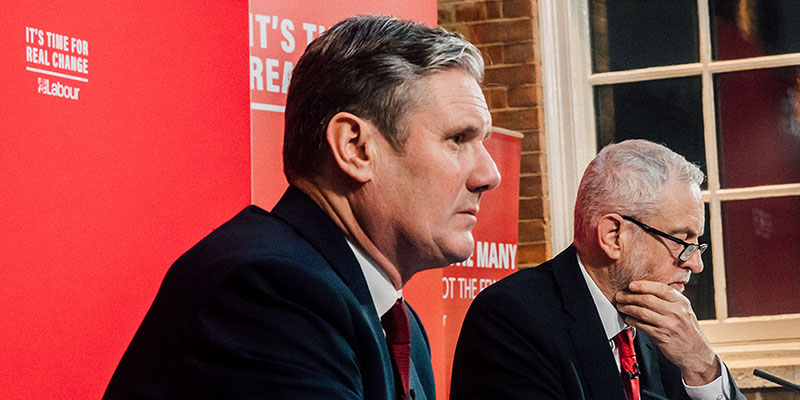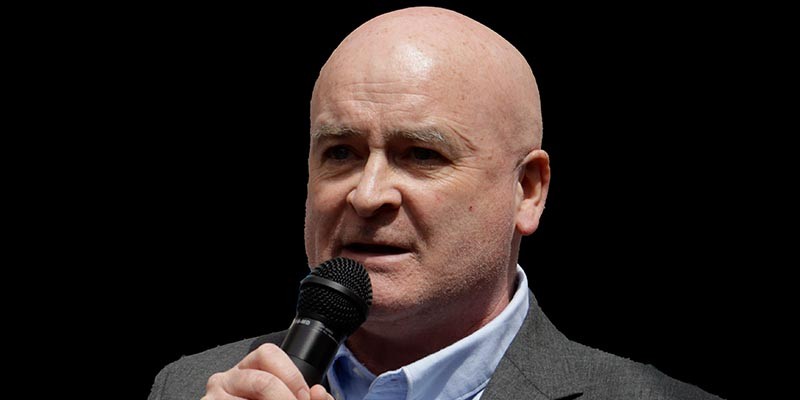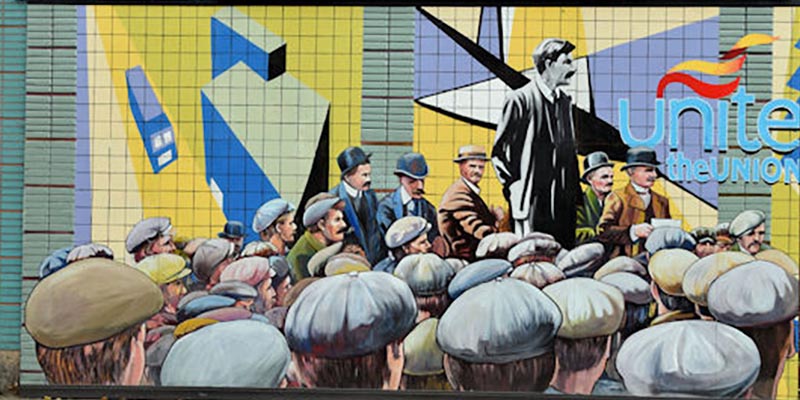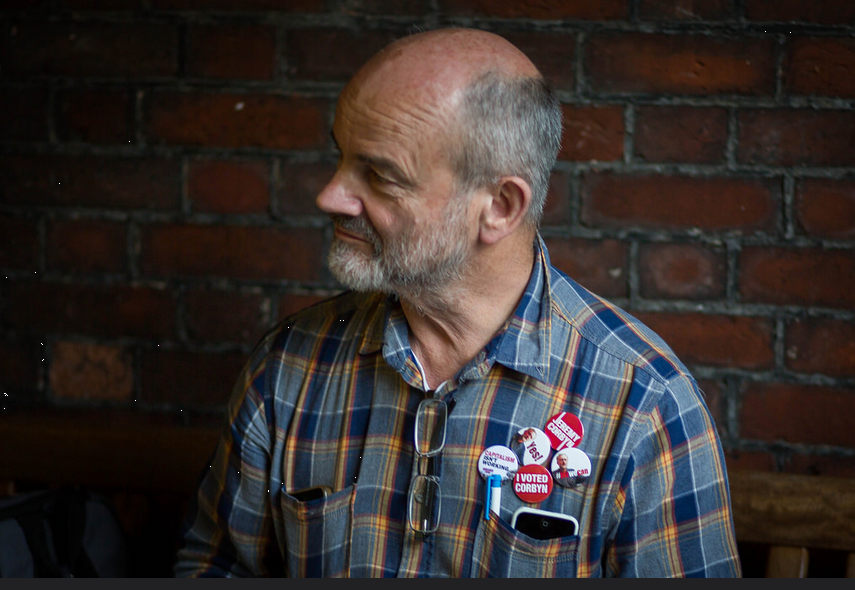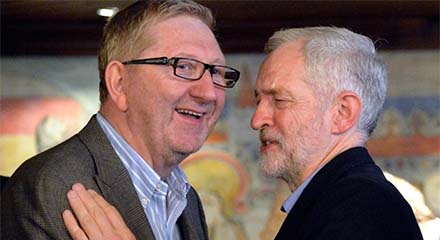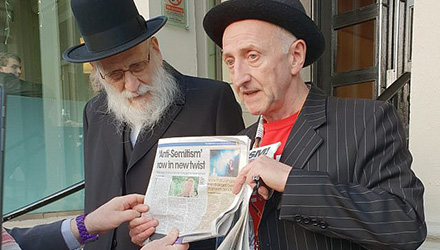Is building a Labour Party mark two a viable strategy? Kevin Bean looks at the Unite policy conference and beyond
The various responses to the proposal at Unite’s policy conference held in Liverpool to disaffiliate from the Labour Party were almost a perfect illustration of the thoroughly confused and incoherent politics of what now passes for much of the left in Britain.
The motion, proposed by supporters of the Socialist Party in England and Wales, called for the union to sever its links with Labour and give its support instead to parties and candidates committed to the interests of the working class. SPEW’s disaffiliation call is linked to its project to build a new workers’ party through the Trade Unionist and Socialist Coalition. Temporarily put on ice during the brief Corbyn years, it has been brought back to ‘life’ under SPEW’s general sectary, Hannah Sell. However, not only do the election results continue to be abysmal (two percent here, one percent there) – that for sub-reformist politics – Tusc has even managed to lose the only jewel in its tawdry crown. Mick Lynch decided he had had enough and RMT walked.
Although SPEW’s call for disaffiliation was ‘overwhelmingly defeated’ at Unite’s conference, its arguments about the nature of the Labour Party and its call for a “new workers’ party” represent the current common sense of the odds and ends, the flotsam, the jetsam – especially amongst former Labour members and the remnants of the Corbyn movement. This common sense has produced myriad initiatives, campaigns and putative networks, which in their many and various ways all agree that Labour under Starmer has finally crossed over the line to become an explicitly bourgeois and anti-working class party. For many of these projects winning the trade unions away from Labour and thus gaining an instant mass base is the key element in their strategy to build an alternative working class party.
Sharon Graham
How realistic is this scenario in the immediate future? Let us start with the debate in Unite and the response of the union’s leadership. Remember how Sharon Graham had campaigned to become general secretary by claiming that she was going to turn away from the politicking in the Westminster bubble that allegedly characterised Len McCluskey’s leadership and instead use the power of the union to focus on shop-floor concerns? She certainly won some left support for that ‘non-political’ stance and for her supposed concentration on the economic interests of the membership. Likewise, Unite’s 2021 decision to reduce its affiliation fee to Labour as a sign of its disapproval of Starmer’s leadership was welcomed as a sign that under Graham the union was moving to the left and becoming more militant.
Since then, she has continued with this left rhetoric and claims that under her leadership the union has secured a whole series of gains for its members during the current strike wave. At best, these deals have merely allowed the better organised sections of the union to keep pace with inflation, while for many these ‘victories’ have in reality been illusory and have actually seen below-inflation ‘increases’. Given this record and her easily acquired reputation for militancy, Graham’s reaction to the calls for disaffiliation is all the more revealing about the real nature of trade union leaders, no matter how left they claim to be.
Sister Graham not only opposed the demand for disaffiliation, but apparently reversed her previous non-political position and instead made demands on the Labour leadership. She put “Keir Starmer on notice” and said that Unite’s support was not a blank cheque and could not be taken for granted.[1] Labour needs to deliver for working people and “talk about what they can do for Britain”. Drawing on a favourite refrain of eulogising the Attlee government, Graham argued that Labour needs to “be as bold” as in 1945, and “give people something to vote for”. Her key demands were that “key industries like energy and steel should be taken into public hands”, adding that Unite would throw union officials and resources into a campaign in marginal seats for these policies, alongside greater involvement by Unite members in the Labour Party at all levels.[2] All a very long way from her previous ‘syndicalist’ position of ignoring Labour and concentrating on the “concerns of her members”.
Transactional
This supposed change of heart is easily explained. As the general election approaches and the possibility of a Starmer government becomes more likely, the organised working class is turning its attention towards politics and the policies of Labour. Starmer’s triangulation strategy aimed at the ‘centre ground’, his conscious dampening down of expectations of even modest reforms, along with his explicit commitment to the wider interests of British capitalism and the American hegemon, give no grounds for optimism about the future for the working class.
His will be the most rightwing and pro-capitalist Labour government ever, exceeding in its loyalty to the existing economic and constitutional order even that of his mentor, Tony Blair.[3] While the real partisans of genuine working class politics can have no illusions in what a Starmer government will mean, trade union leaders see things rather differently.
Graham’s approach is transactional: that is, she sees her function as securing the ‘best deal’ for her members and furthering the interests of the labour bureaucracy, not least Unite’s layer of full-time officials. Trade union leaders, if they act as trade union leaders, not under communist discipline, are merchants in the labour-power of their members, striking deals with capitalists about the price of that commodity. Even the most militant leaderships, while they confine themselves to bargaining within the framework of the economic status quo, are not campaigning against the nature of capitalist exploitation, but seeking to mitigate its effects and gain some (temporary) improvements and concessions. However, even from the earliest period of general unionism in the 19th century, the organised working class went beyond purely industrial forms of struggle and attempted to secure gains through political action and legislation. The formation of the Labour Representation Committee in 1900 was itself a product of this dynamic and a recognition of the limitations of ‘pure trade unionism’.
Thus, both the needs of the working class under capitalism and the self-interests of the labour bureaucracy will drive trade unions to adopt basic political positions and so intervene politically to secure them. However, this approach still remains transactional, although in a political rather than in an industrial sense. As Graham explained during the Unite conference,
This is the moment of maximum leverage for the union, where we can hold Labour to account … Now cannot be the time to walk away. We would be weakening our own arm. It would be the worst time to leave the Labour Party when they are in touching distance of power. If we leave we wouldn’t influence that power.[4]
So, while calls for ‘bolder policies’ from Labour do represent something of a new orientation towards high politics, this strategy is still one of applying pressure to gain some limited concessions rather than challenging the capitalist political and economic order. Although the climate and balance of forces has changed considerably since the 1970s, Graham’s rhetoric is that of the union boss cutting a deal with politicians over the heads of the membership, not a militant fighter seeking to mobilise the working class.
Trade unions
Marxists should not, of course, be surprised by any of this. Neither should they misinterpret Starmer’s distancing of Labour from the trade unions: like Blair, his triangulation and electoral strategy requires it, as does Sir Keir’s desire to constantly prove his unquestioning loyalty to capitalism. Graham’s futile posturing and threats to apply “maximum leverage” are grist to Starmer’s mill and, as with the child benefit cap and the bedroom tax policy, give him yet another opportunity to demonstrate just how far his Labour Party has come from the ‘horrors’ of the Corbyn period.
If the conference vote and Graham’s defence of the link with Labour shows the umbilical cord between the trade union leadership and Labour politicians – and the essential Labourist politics of even the left of the union tops – it also points up another important feature of the workers’ movement in Britain. As it stands, Labour remains a bourgeois workers’ party, although Sir Keir’s well-documented dalliance with rich business donors and liaisons with lobbyists certainly strengthen the pro-capitalist elements at the top of the party and pose the question of the de-labourisation of Labour. The coming election will be more of an unpopularity contest based on anti-Tory feeling than anything like a positive endorsement of Labour: expectations are low amongst both the organised working class and the electorate as a whole, with many being disillusioned even before Starmer enters No10.
Given the Tory policies that the next Labour government will attempt to maintain, calls for an alternative to Labour and initiatives to build a new workers’ party will grow in intensity from the off. Many of these initiatives will focus on using the existing Labour Party as an organisational and political model: that is, a broad workers’ party, based on the trade unions, which will essentially be a Labour Party mark two – albeit one to the left of the current party.
However, Graham’s intervention shows that even the left trade union leaders see no viable option for their politics and their interests outside of Labour, although it cannot be ruled out that strong currents of opposition could emerge, both within the unions and beyond, that could put pressure on these leaders and result in disaffiliation and the creation of some new formation in the future. But, unless this new organisation was committed to a Marxist programme, it would remain in essence Labourist, and so firmly rooted in capitalism and the existing constitutional order.
Broad parties simply based on opposition to the worst excesses of capitalism and basing themselves on the existing political and trade union consciousness will only reproduce Labourism in form and content, no matter how militant the rhetoric. Marxists (along with the ruling class) have long recognised that the Labour Party and Labourism remain a major barrier to developing a revolutionary socialist consciousness. The experience of Dave Nellist’s Tusc and the countless other initiatives that have been undertaken since the 1990s show the futility of attempting to construct a Labour Party mark two when the Labour Party mark one still exists.
This is not an argument for accepting the dominance of Labourism within the workers’ movement and simply adapting to it, or of working slowly to transform Labour from within. Rather it is an argument for not abandoning the Labour Party and the unions to the pro-capitalists, but instead fighting, if we can, to drive them and their politics out of the labour movement and transforming Labour into a united front of a special kind – without bans and proscriptions, and open to all socialist tendencies and working class organisations.
Socialist Appeal
But, with or without success in the Labour Party – -a very remote possibility at this particular point in time – what is key is a mass Communist Party, not a confessional sect such as Alan Woods’ Socialist Appeal, repackaging itself in the attempt to recruit student radicals. One day they were dull-as-ditchwater clause-four socialists: the next day they reappear as so-called communists. ‘So-called’ because they refuse to unite with, debate or even talk to other communists – certainly not real communists. That is cynical marketing, not principled Marxism. Obviously, the working class requires something far more serious, far more worthwhile.
[1]. www.theguardian.com/uk-news/2023/jul/10/starmer-put-on-notice-by-unite-leader-after-vote-to-retain-ties-with-labour.
[2]. www.theguardian.com/politics/2023/jul/15/labour-must-give-people-something-to-vote-for-says-unite-head.
[3]. www.theguardian.com/politics/2023/jul/18/blair-and-starmer-bask-in-each-others-reflected-glory.
[4]. www.theguardian.com/uk-news/2023/jul/10/starmer-put-on-notice-by-unite-leader-after-vote-to-retain-ties-with-labour.
